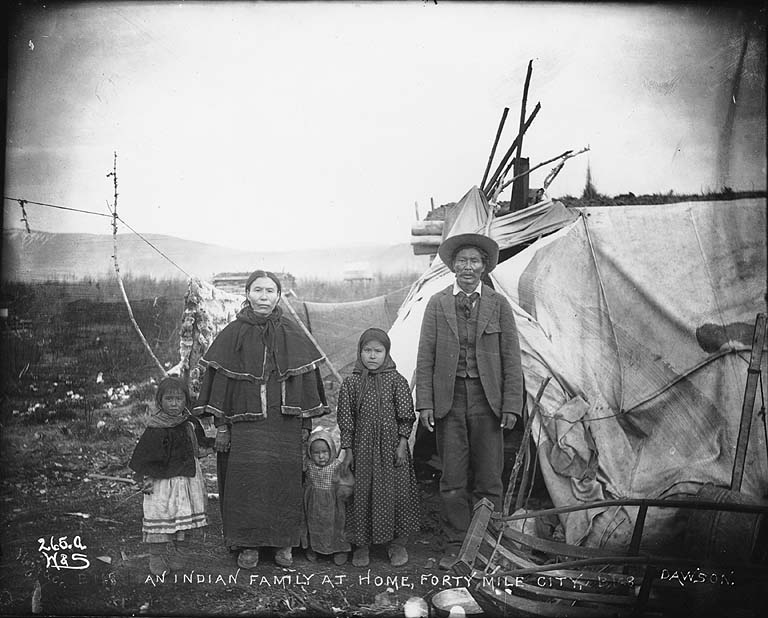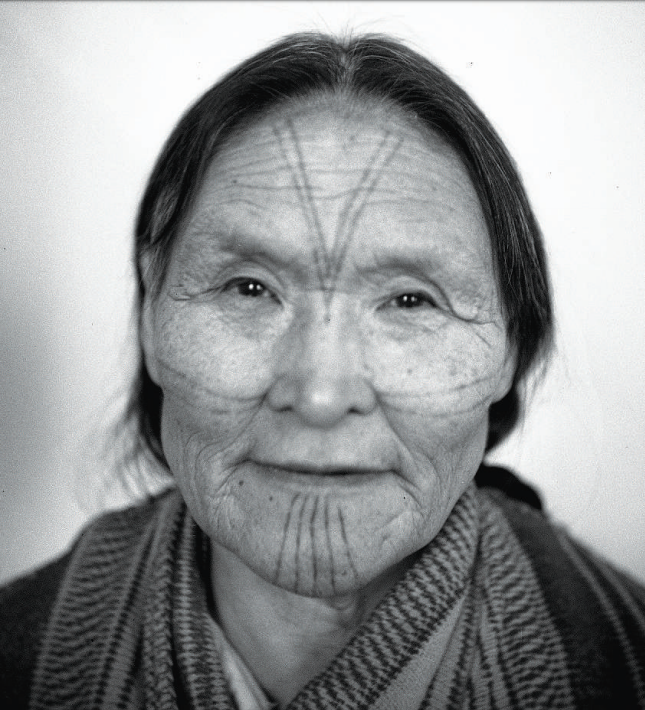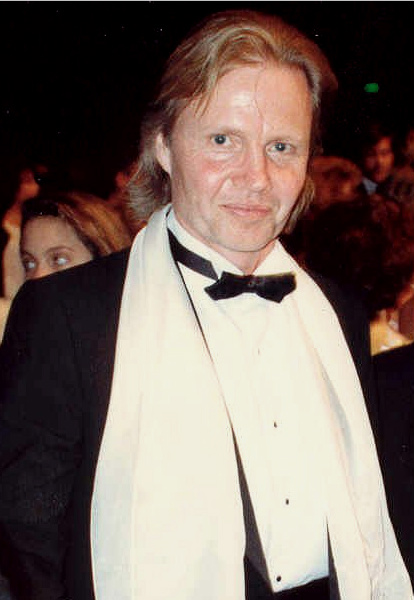|
Yidįįłtoo
Yidiiltoo or Yidįįłtoo are the traditional face tattoos of Hän Gwich’in women, who are indigenous to Alaska and Canada. History The practice dates back at least 10,000 years. Traditionally girls of the Hän Gwich’in receive their first tattoos between the ages of 12 and 14, often at first menstruation. Missionaries of the 1800s and 1900s banned the traditional practice along with other cultural traditions. Starting in the 2010s, some indigenous girls and women began to reclaim the tradition. Description Typical markings include vertical lines from lower lip that extend to beneath the chin. According to tattoo anthropologist Lars Krutak, the width of the lines and the spacing between them were traditionally associated with which of the nine groups of Hän Gwich’in the girl was from. Other markings may be created on the temple or cheeks. Method of application The traditional method is a stick-and-poke using needles made from bird bones. Some modern pract ... [...More Info...] [...Related Items...] OR: [Wikipedia] [Google] [Baidu] |
Face Tattoo
A face tattoo or facial tattoo is a tattoo located on the bearer's face or head. It is part of the traditional tattoos of many ethnic groups. In modern times, although it is considered taboo and socially unacceptable in many cultures, as well as considered extreme in body art, this style and placement of tattoo has emerged in certain subcultures in recent years. This is due to the continuing acceptance of tattoos and the emergence of hip-hop culture popularizing styles such as the teardrop tattoo. Traditions Face tattooing is traditionally practiced by many ethnic groups worldwide. As indicator of status, maturity, or beauty Ainu The Ainu people of northern Japan and parts of Russia, including Sakhalin, the Kuril Islands and Kamchatka Krai, have a practice of facial tattooing exclusive to women, in which a smile is inked around the mouth to prevent spirits from entering the body through the mouth. This form of tattooing also serves a secondary purpose of showing maturity. ... [...More Info...] [...Related Items...] OR: [Wikipedia] [Google] [Baidu] |
Gwichʼin
The Gwichʼin (or Kutchin) are an Athabaskan-speaking First Nations people of Canada and an Alaska Native people. They live in the northwestern part of North America, mostly above the Arctic Circle. Gwichʼin are well-known for their crafting of snowshoes, birchbark canoes, and the two-way sled. They are renowned for their intricate and ornate beadwork. They also continue to make traditional caribou-skin clothing and porcupine quillwork embroidery, both of which are highly regarded among Gwichʼin. Today, the Gwich’in economy consists mostly of hunting, fishing, and seasonal wage-paying employment. Name Their name is sometimes spelled ''Kutchin'' or ''Gwitchin'' and translates as "one who dwells" or "resident of region" Historically, the French called the Gwichʼin ''Loucheux'' ("squinters"), as well as ''Tukudh'' or ''Takudh'', a term also used by Anglican missionaries. Sometimes, these terms may refer (explicitly or implicitly) to particular dialects of the Gwichʼin la ... [...More Info...] [...Related Items...] OR: [Wikipedia] [Google] [Baidu] |
Tavlugun
The tavluġun is an indigenous Iñupiaq chin tattoo worn by women. See also * Kakiniit * Yidįįłtoo Yidiiltoo or Yidįįłtoo are the traditional face tattoos of Hän Gwich’in women, who are indigenous to Alaska and Canada. History The practice dates back at least 10,000 years. Traditionally girls of the Hän Gwich’in receive their fir ..., the traditional face tattoos of the Hän Gwich’in. References {{Tattoo Inupiat culture Tattooing traditions Tattoo designs ... [...More Info...] [...Related Items...] OR: [Wikipedia] [Google] [Baidu] |
Kakiniit
Kakiniit ( iu, ᑲᑭᓐᓃᑦ ; sing. ''kakiniq'', iu, label=none, ᑲᑭᓐᓂᖅ) are the traditional tattoos of the Inuit of the North American Arctic. The practice is done almost exclusively among women, with women exclusively tattooing other women with the tattoos for various purposes. Men could also receive tattoos but these were often much less extensive than the tattoos a woman would receive. Facial tattoos are individually referred to as tunniit ( iu, label=none, ᑐᓃᑦ), and would mark an individual's transition to womanhood. The individual tattoos bear unique meaning to Inuit women, with each individual tattoo carrying symbolic meaning. However, in Inuinnaqtun, kakiniq refers to facial tattoos. Historically, the practice was done for aesthetic, medicinal purposes, part of the Inuit religion, and to ensure the individual access to the afterlife. Despite persecution by Christian missionaries during the 20th century, the practice has seen a modern revival by organiza ... [...More Info...] [...Related Items...] OR: [Wikipedia] [Google] [Baidu] |
Quannah Chasinghorse
Quannah Rose Chasinghorse-Potts (born c. 2002) is an Indigenous American model. She appeared on the 2020 ''Teen Vogue'' list of Top 21 under 21. Career Chasinghorse was interested in modeling and fashion from a young age but, due to the lack of indigenous representation she found in magazines and fashion shows, did not think it was feasible as a career. In 2020, she landed a gig with Calvin Klein for their ''one future #ckone'' youth campaign. She then signed with IMG Models. She has since featured on the covers of ''Vogue Mexico'', ''Vogue Japan'', '' V Magazine,'' ''Elle'', and ''Porter''. She became recognised for her traditional face tattoos called Yidįįłtoo. Chasinghorse makes a point of celebrating indigenous fashion and promoting sustainable indigenous brands. Her red carpet look at the Gilded Age themed Met Gala in May 2022 went viral on social media. The Navajo-inspired outfit was put together by Peter Dundas, Tabitha Simmons, Gucci Westman, and 2006 Miss Navajo N ... [...More Info...] [...Related Items...] OR: [Wikipedia] [Google] [Baidu] |
Athapaskan Clothing And Related Objects In The Collections Of Field Museum Of Natural History (1981) (20317173116)
Athabaskan (also spelled ''Athabascan'', ''Athapaskan'' or ''Athapascan'', and also known as Dene) is a large family of indigenous languages of North America, located in western North America in three areal language groups: Northern, Pacific Coast and Southern (or Apachean). Kari and Potter (2010:10) place the total territory of the 53 Athabaskan languages at . Chipewyan is spoken over the largest area of any North American native language, while Navajo is spoken by the largest number of people of any native language north of Mexico. ''Athebaskan '' is a version of a Cree name for Lake Athabasca ( crm, Āðapāskāw, script=Latn 'herethere are reeds one after another'), in Canada. Cree is one of the Algonquian languages and therefore not itself an Athabaskan language. The name was assigned by Albert Gallatin in his 1836 (written 1826) classification of the languages of North America. He acknowledged that it was his choice to use that name for the language family and its asso ... [...More Info...] [...Related Items...] OR: [Wikipedia] [Google] [Baidu] |
Angelina Jolie
Angelina Jolie (; born Angelina Jolie Voight; June 4, 1975) is an American actress, filmmaker, humanitarian and former Special Envoy to the UN High Commissioner for Refugees. The recipient of numerous accolades, including an Academy Award and three Golden Globe Awards, she has been named Hollywood's highest-paid actress multiple times. Jolie made her screen debut as a child alongside her father, Jon Voight, in ''Lookin' to Get Out'' (1982), and her film career began in earnest a decade later with the low-budget production ''Cyborg 2'' (1993), followed by her first leading role in a major film, ''Hackers'' (1995). She starred in the critically acclaimed biographical cable films '' George Wallace'' (1997) and ''Gia'' (1998), and won an Academy Award for Best Supporting Actress for her performance in the 1999 drama '' Girl, Interrupted''. Her starring role as the titular video game heroine in '' Lara Croft: Tomb Raider'' (2001) established her as a leading Hollywood actress ... [...More Info...] [...Related Items...] OR: [Wikipedia] [Google] [Baidu] |
Oglala Lakota
The Oglala (pronounced , meaning "to scatter one's own" in Lakota language) are one of the seven subtribes of the Lakota people who, along with the Dakota people, Dakota, make up the Sioux, Očhéthi Šakówiŋ (Seven Council Fires). A majority of the Oglala live on the Pine Ridge Indian Reservation in South Dakota, the eighth-largest Indian reservation, Native American reservation in the United States. The Oglala are a List of federally recognized tribes, federally recognized tribe whose official title is the Oglala Sioux Tribe (previously called the Oglala Sioux Tribe of the Pine Ridge Reservation, South Dakota). However, many Oglala reject the term "Sioux" due to the hypothesis (among Sioux#Names, other possible theories) that its origin may be a derogatory word meaning "snake" in Ojibwe language, the language of the Ojibwe, who were among the historical enemies of the Lakota. They are also known as Oglála Lakhóta Oyáte. History Oglala elders relate stories about the orig ... [...More Info...] [...Related Items...] OR: [Wikipedia] [Google] [Baidu] |
Brulé
The Brulé are one of the seven branches or bands (sometimes called "sub-tribes") of the Teton (Titonwan) Lakota American Indian people. They are known as Sičhą́ǧu Oyáte (in Lakȟóta) —Sicangu Oyate—, ''Sicangu Lakota, o''r "Burnt Thighs Nation". Learning the meaning of their name, the French called them the ''Brûlé'' (literally, "burnt"). The name may have derived from an incident where they were fleeing through a grass fire on the plains. Distribution Many Sičhą́ǧu people live on the Rosebud Indian Reservation in southwestern South Dakota and are enrolled in the federally recognized Rosebud Sioux Tribe, also known in Lakȟóta as the ''Sičhą́ǧu Oyáte.'' A smaller population lives on the Lower Brule Indian Reservation, on the west bank of the Missouri River in central South Dakota, and on the Pine Ridge Indian Reservation, also in South Dakota, directly west of the Rosebud Indian Reservation. The different federally recognized tribes are politically inde ... [...More Info...] [...Related Items...] OR: [Wikipedia] [Google] [Baidu] |
Lars Krutak
Lars Krutak (April 14, 1971) is an American anthropologist, photographer, and writer known for his research about tattoo and its cultural background. He produced and hosted the 10-part documentary series ''Tattoo Hunter'' on the Discovery Channel, which traveled the indigenous world to showcase vanishing art forms of body modification. Between 1999-2002 and 2010-2014, Krutak worked as an Archaeologist and Repatriation Case Officer at the National Museum of the American Indian and National Museum of Natural History, facilitating the return of human remains, funerary objects, sacred and ceremonial objects. Today, he is a research associate at the Museum of International Folk Art. Early life and career Krutak was born in Lincoln, Nebraska, to Dr. Paul Krutak (1934–2016), a traveling geologist and university professor, who moved the family to Mexico City in 1979 and then to a series of states including Louisiana, Texas, and eventually Colorado where he grew up in the small mounta ... [...More Info...] [...Related Items...] OR: [Wikipedia] [Google] [Baidu] |
Stick And Poke
A tattoo is a form of body modification made by inserting tattoo ink, dyes, and/or pigments, either indelible or temporary, into the dermis layer of the skin to form a design. Tattoo artists create these designs using several tattooing processes and techniques, including hand-tapped traditional tattoos and modern tattoo machines. The history of tattooing goes back to Neolithic times, practiced across the globe by many cultures, and the symbolism and impact of tattoos varies in different places and cultures. Tattoos may be decorative (with no specific meaning), symbolic (with a specific meaning to the wearer), or pictorial (a depiction of a specific person or item). Many tattoos serve as rites of passage, marks of status and rank, symbols of religious and spiritual devotion, decorations for bravery, marks of fertility, pledges of love, amulets and talismans, protection, and as punishment, like the marks of outcasts, slaves and convicts. Extensive decorative tattooing has also ... [...More Info...] [...Related Items...] OR: [Wikipedia] [Google] [Baidu] |
USA Today
''USA Today'' (stylized in all uppercase) is an American daily middle-market newspaper and news broadcasting company. Founded by Al Neuharth on September 15, 1982, the newspaper operates from Gannett's corporate headquarters in Tysons, Virginia. Its newspaper is printed at 37 sites across the United States and at five additional sites internationally. The paper's dynamic design influenced the style of local, regional, and national newspapers worldwide through its use of concise reports, colorized images, Infographic, informational graphics, and inclusion of popular culture stories, among other distinct features. With an average print circulation of 159,233 as of 2022, a digital-only subscriber base of 504,000 as of 2019, and an approximate daily readership of 2.6 million, ''USA Today'' is ranked as the first by circulation on the list of newspapers in the United States. It has been shown to maintain a generally center-left audience, in regards to political persuasion. ''US ... [...More Info...] [...Related Items...] OR: [Wikipedia] [Google] [Baidu] |







